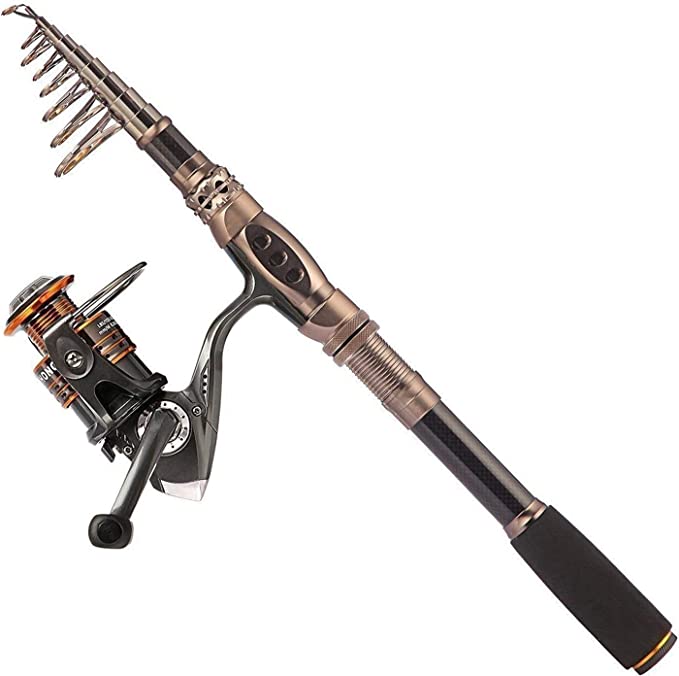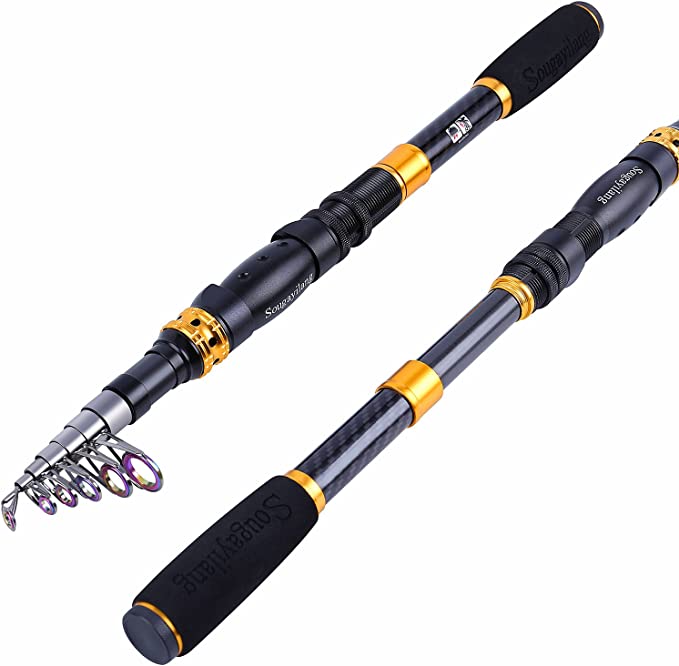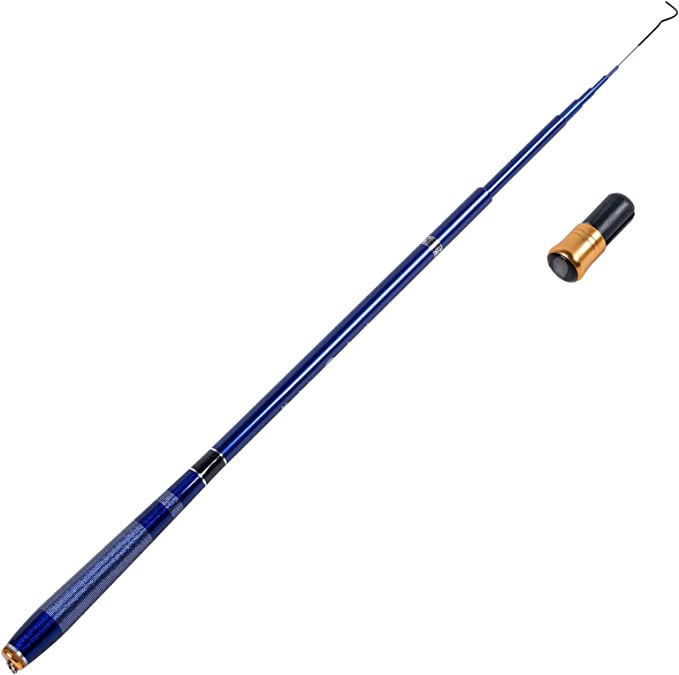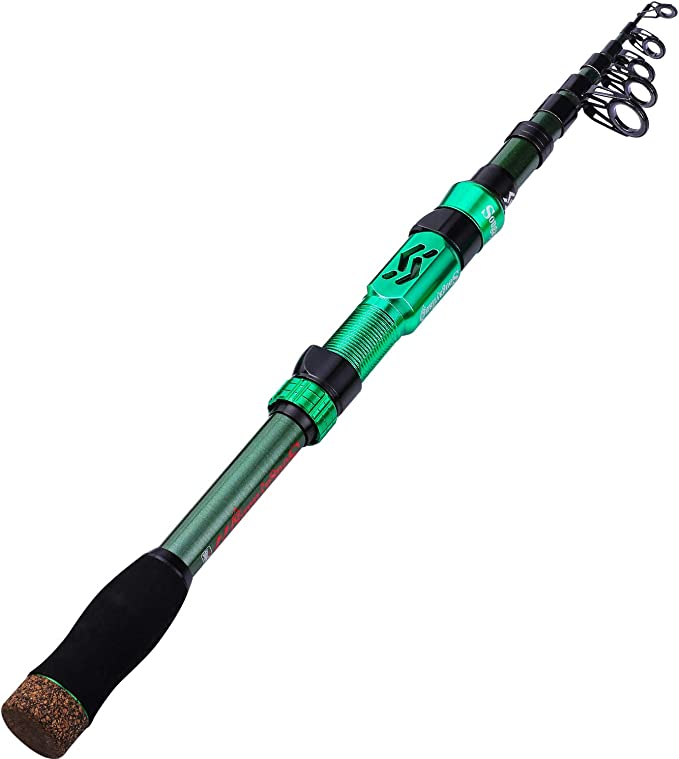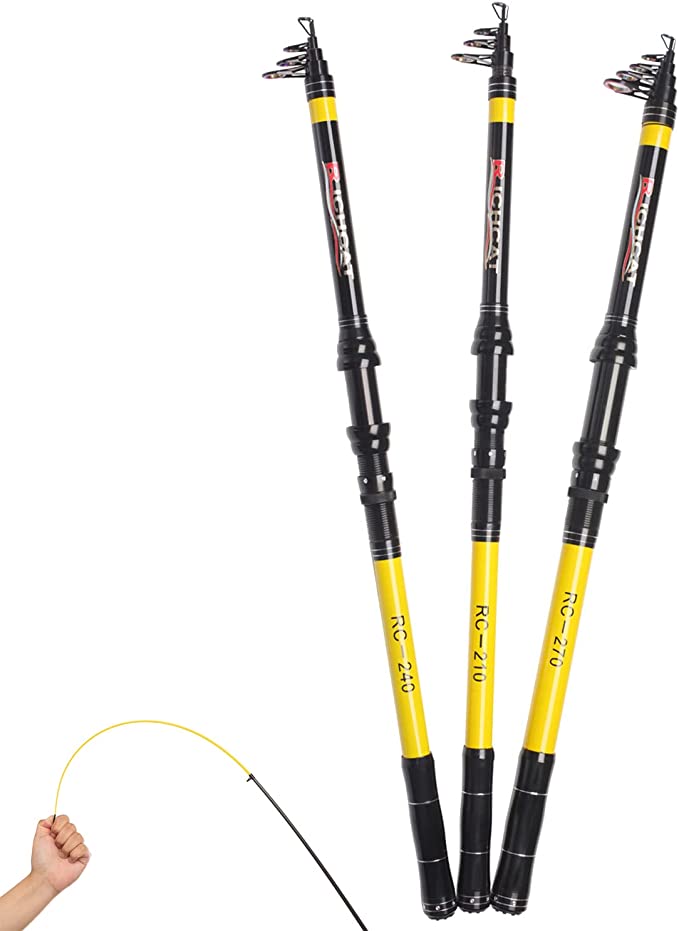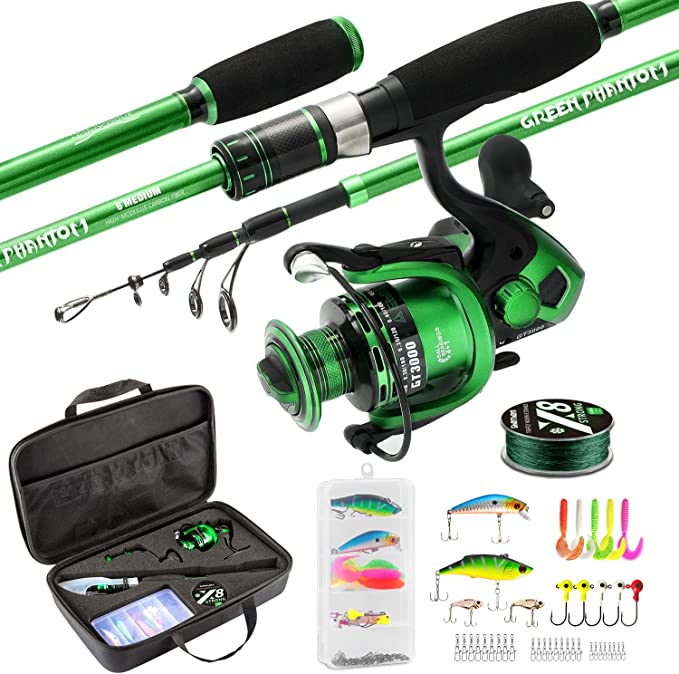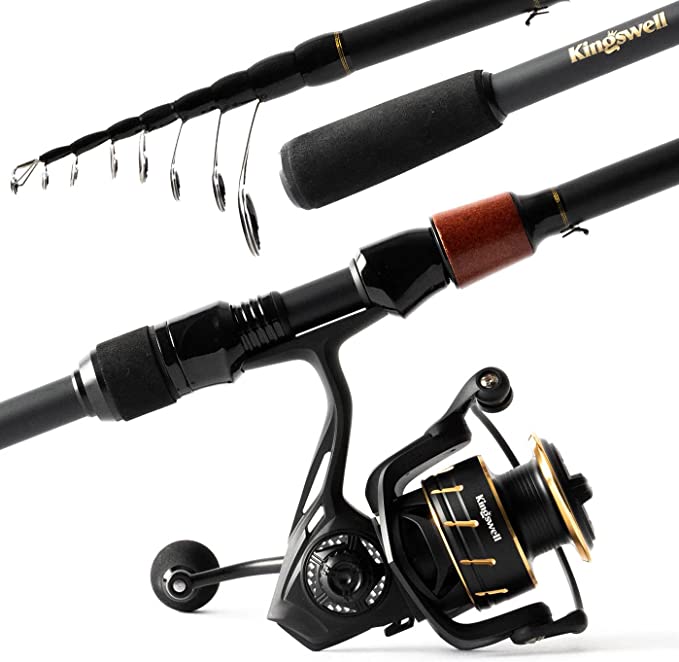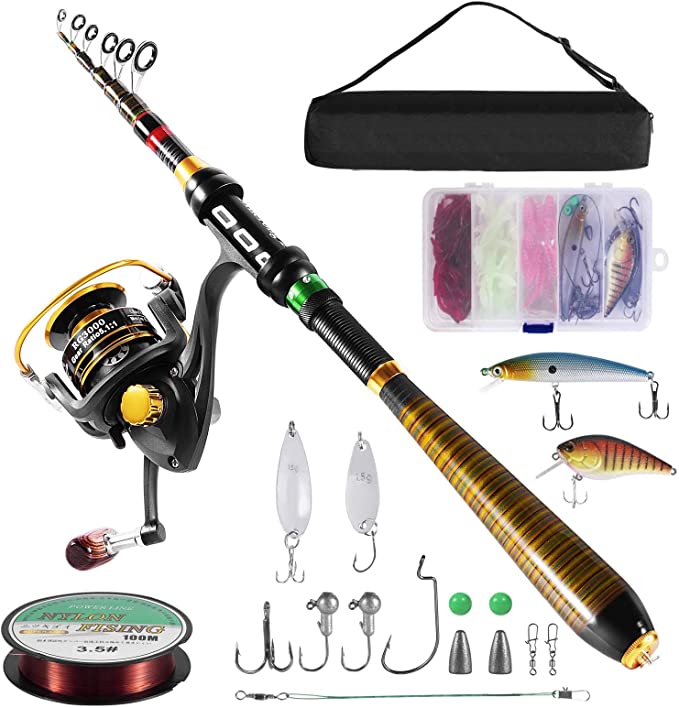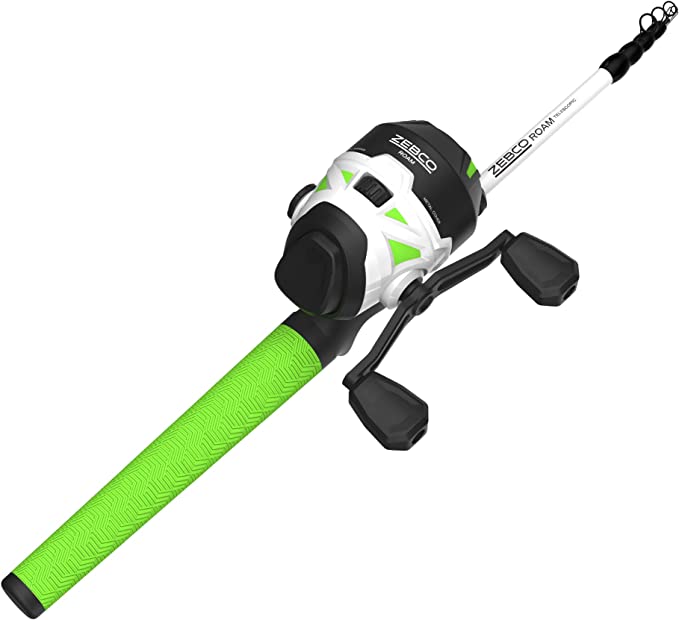The Anatomy of Adventure: How Science Packs Freedom into a Telescopic Fishing Rod
Update on Aug. 1, 2025, 2:59 p.m.
It’s a familiar feeling for any modern soul with a love for the wild: a sudden, pressing urge to escape. It might strike on a Tuesday afternoon, staring out an office window, or while driving past a glittering, tree-lined reservoir. The impulse is pure, but the logistics are often messy. For the angler, this is doubly true. Traditional fishing gear, with its long, one-piece rods and bulky tackle boxes, is the very antithesis of spontaneity. It demands planning, space, and commitment. But what if the gear itself could be an enabler of freedom, rather than a barrier?
Enter the modern telescopic fishing combo, a piece of equipment that appears, at first glance, to be a simple convenience. Yet, to dismiss it as such is to overlook a quiet marvel of applied science. Contained within its compact, travel-ready form is a thoughtful synthesis of material science and mechanical engineering, designed with a single, profound purpose: to pack adventure into a package you can take anywhere. This is not just the story of a fishing rod; it’s the anatomy of how science engineers our freedom.
The Spine of a Wanderer: Deconstructing 24T Carbon Fiber
At the core of this portable marvel lies its spine: a rod built from 24T Carbon Fiber. To understand why this specific material is so crucial, we must look beyond the marketing term. Carbon fiber is a composite material, a symbiotic partnership between ultra-strong, hair-thin carbon filaments and a stabilizing resin matrix. The “24T” is a rating of its Young’s Modulus—a measure of its stiffness, or its resistance to being bent.
In the world of high-performance rods, there’s often a race toward higher modulus materials (40T, 60T). While these create incredibly stiff and sensitive instruments, they also become more brittle, like glass. For a telescopic rod that must endure the stresses of repeated extension, compression, and the occasional knock inside a backpack, extreme stiffness is a liability. 24T carbon represents a scientific sweet spot. It offers the perfect balance between rigidity and toughness—possessing enough stiffness to transmit the faintest bite from the lure to your hand, yet retaining enough flexibility to absorb the shock of a sudden lunge from a powerful fish. It’s the difference between a world-class gymnast, who blends strength with fluid agility, and a powerlifter, built for pure, rigid force. This calculated choice in material science is what gives the rod its light, responsive feel without sacrificing the durability needed for adventure.
Silent Partners in Performance: The Science of Guides and Grips
A rod’s potential is unlocked by its components, and here too, science operates in subtle but critical ways. The fishing line, your only connection to the underwater world, flows through a series of stainless steel guides. But the real magic lies within the smooth, dark rings they house: ceramic. In the field of tribology—the science of friction, wear, and lubrication—ceramic is a champion. Its surface is incredibly hard and slick, creating a near-frictionless pathway for the line. This translates into two tangible benefits: longer, smoother casts as energy is conserved, and crucial protection for your line. When a fish makes a hard run, the line screams through the guides, and friction generates heat that can weaken and snap it. Ceramic’s high thermal conductivity whisks this heat away, acting as a radiator to keep your line safe in the critical moments of the fight. It’s less a simple ring and more a high-performance bobsled run for your fishing line.
Further down, where hand meets rod, we find the EVA handle. Often overlooked, this Ethylene Vinyl Acetate grip is another piece of deliberate engineering. It is a closed-cell foam, meaning it’s composed of millions of tiny, sealed bubbles. This structure makes it incredibly lightweight and, crucially, impervious to water. Unlike traditional cork, it won’t absorb moisture, get slimy, or degrade over time. It provides a firm, comfortable, and secure grip, ensuring that even in the rain or with wet hands, you maintain perfect control.
The Engine Room: A Look Inside the Reel’s Mechanics
If the rod is the sensitive nerve center, the reel is the powerful engine room. The Magreel combo features a reel with a 5.2:1 gear ratio. This ratio is the mechanical soul of the reel, dictating its personality. It means that for every single 360-degree turn of the handle, the spool rotates 5.2 times. In automotive terms, this isn’t a low-torque first gear or a high-speed sixth gear; it’s the versatile and reliable third or fourth gear. It provides a masterful balance between:
- Speed: It’s fast enough to quickly retrieve slack line, keeping you in constant contact with your lure.
- Power (Torque): It has enough cranking force to confidently manage a struggling fish, turning its head and guiding it toward you.
This “do-it-all” nature is complemented by the anodized aluminum spool. The anodization process creates a hard, corrosion-resistant layer of aluminum oxide on the surface, protecting the lightweight metal from the inevitable exposure to water and grit. It’s a system where every part is chosen to contribute to a balanced, reliable whole.
Synthesis: Engineering a State of Readiness
Individually, each of these elements is a small testament to scientific progress. But their true genius is revealed when they are synthesized into a single, cohesive system. The lightweight carbon fiber allows for a multi-section telescopic design. The durable, low-friction guides ensure performance isn’t lost in the compact form. The robust reel provides the power, and the whole system collapses down to fit inside its protective EVA carrier.
This is the ultimate function: to engineer a constant state of readiness. This is the rod that lives in the trunk of your car, turning a lunch break into a casting session. It’s the kit you toss in your backpack for a hike, transforming a mountain lake from a pretty view into an active pursuit. It exists to eliminate the excuse of inconvenience.
So the next time you see a compact fishing kit, look closer. It is not merely a lesser version of its full-sized cousins. It is a different beast altogether. It is a piece of technology where the principles of material science, tribology, and mechanical engineering have been marshaled not just to catch fish, but to create opportunity. It’s a physical manifestation of the idea that science can, and should, serve our most human impulses—for quiet, for nature, and for the freedom of an unplanned adventure.

